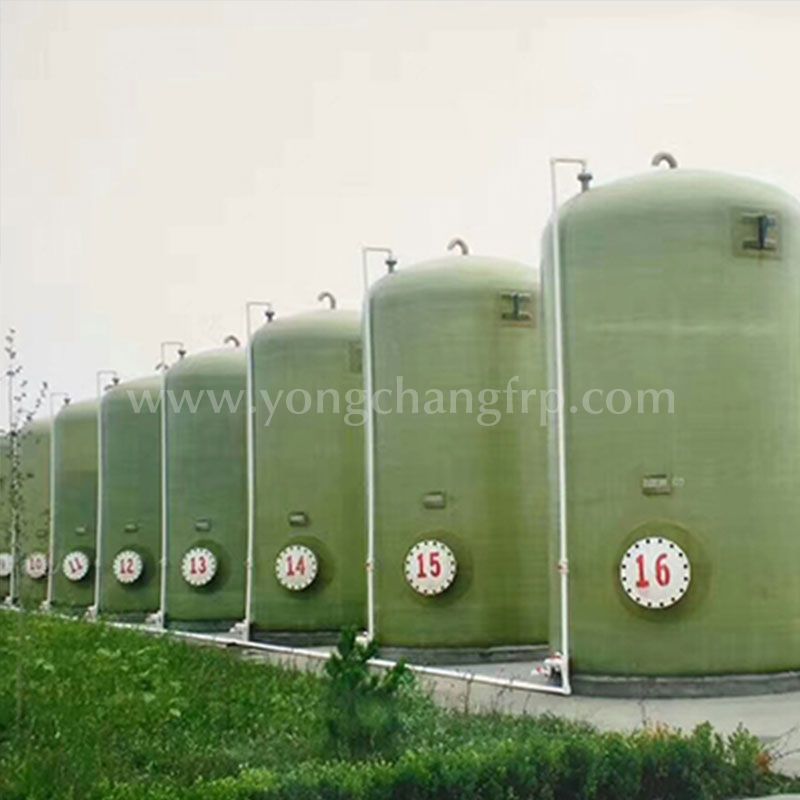FRP Nitrogen Sealed Water Tank fiberglass water storage tanks fiberglass tank for sale FRP Storage Tank
Product Description
Specification: DN3500*5250
Medium: ultrapure water
FRP nitrogen sealed water tanks are generally used in ultra-pure water systems, that is, nitrogen is filled on the water surface of the water tank to maintain a proper positive pressure in the tank and prevent the atmosphere from contacting the water surface in the tank. Generally used in mixed bed or EDI electrodeionization equipment after the need to set up a buffer tank, a nitrogen sealed water tank is used as the buffer tank. The nitrogen sealing device is composed of two parts: a quick relief valve and a micro-pressure regulating valve. The quick relief valve consists of a pressure controller and a single-seat shut-off valve.

The Yongchang-branded glass fiber reinforced plastic (FRP) storage tanks are well designed and manufactured according to customer demand, with various shapes, sizes and configurations. We can manufacture storage tanks of any specification and pressure, which can be made into composite containers such as PVC/FRP, PP/FRP, PVDF/FRP according to the conditions of use. Our designers can calculate the hoop stress, axial stress, and bending Poisson’s ratio coefficient of the product according to your available space, chemical storage requirements and applicable natural conditions, and then give the detailed manufacturing process parameters, such as product selection, product thickness, and layering. All of our designed containers meet industry standards, such as ASTM D3299 for filament-wound storage tanks and ASTM D4097 for contact molded storage tanks.
Advantages of FRP storage tank:
(1) Light weight and high strength
The density is between 1.5~2.0, only 1/4~1/5 of carbon steel, but the tensile strength is close to or even higher than that of carbon steel
2) Good corrosion resistance
3) Good electrical performance
It is an excellent insulating material used to make insulators.
Scope of application
Media that can be stored: inorganic acids, organic acids, bases and hydroxides, elements, gases, and other inorganic compounds, alcohols, aldehydes, ketones, ethers, esters, hydrocarbons and petroleum products, halogen-containing organic compounds and other organic compounds, etc. medium.
If you want to know more about FRP series, please click here to visit our website.
Previous: ViShield Diagnostic kit for anti- 2019-nCoV IgM/IgG Antibodies(Colloidal Gold)
Next: What are the Reasons for the Increase in Demand for Stainless Steel Conduit?
Copyright:@2020-2021
Comments Please sign in or sign up to post.
0
0 of 500 characters used